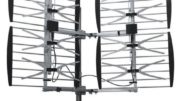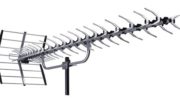You know what TV market you’re in. You may not even know you know. But you know. It’s where you get your TV from. For some of you, that’s clear. You live near a major city and that’s where the TV towers are. For other areas, two or three smaller cities share honors. And if you’re fairly rural, you may get signals from more than one faraway city.
But rest assured there is one and only one answer to this question. Nielsen, the company that’s been tracking TV ratings for longer than almost all of us have been alive, uses a term called “DMA.” This stands for “Designated Market Area” and I’ve also heard it referred to as “Dominant Market Area.” It’s possible that was an older term that isn’t used anymore.
This DMA is used to tell broadcasters what their ratings are. And those ratings dictate the prices that those broadcasters can charge for ads. Simple as that.
Or is it?
Nielsen isn’t the US government. They are a company that publishes research data. When it comes to television, there’s so much more than that.
Obviously advertising is important to broadcasters. But it’s not the only measure of television. Remember, TV broadcasters are licensed to operate. They must guarantee to not only provide TV programs, but actually serve the public good in the areas in which they are licensed.
Not only that, but there are only 34 television channels. The FCC’s licensing process makes sure that neighboring cities don’t use the same channels so those people in the middle can get the stations they want. In densely populated areas like the Northeast, this is extremely important.
The conundrum of the West
Take a look at this map from Wikipedia which shows Television Market Areas, the government’s term which corresponds to Nielsen’s DMA:

Each color represents a different market. In some areas you can see that they are pretty closely packed together. At Solid Signal’s HQ, we’re in the Detroit TMA, but we’re not far from Toledo, Grand Rapids, and even Flint. A person with a large antenna could get stations from a lot of places.
Then look at New Mexico, Arizona, or Utah. Remember that a TV signal travels about 60-75 miles in general. Those markets are much bigger than 75 miles. I mean, the Salt Lake City market is literally the entire state of Utah plus pieces of Nevada and possibly Montana. Those areas are pretty sparsely populated but not the point. The point is that you couldn’t put up an antenna in St. George and get TV from Salt Lake City. It’s about 250 miles, yet the FCC considers it all one area.
Obviously it’s less of a concern now…
If you live in the wilds of northwestern New Mexico, you can get satellite internet and satellite TV from a company like Solid Signal. (In fact, you should call us at 888-233-7563 and we’ll hook you up.) But all that is fairly new. It also doesn’t address the fact that these local areas aren’t really getting televised news like larger cities. I think there’s something sort of unfair there. But then again, I’m just a blogger. It’s not up to me, right?





